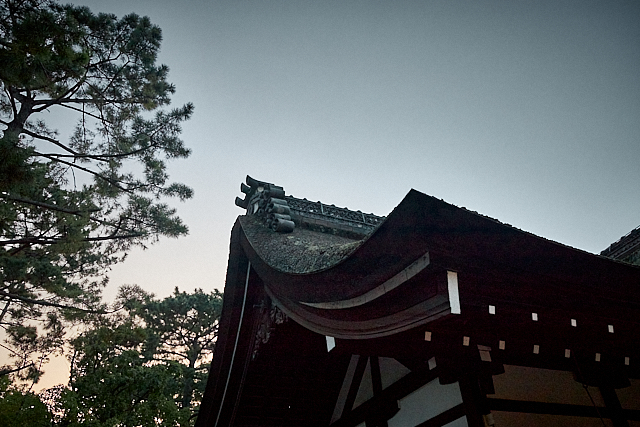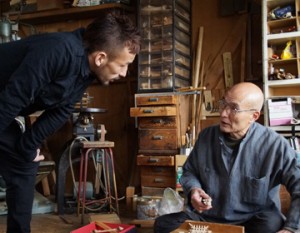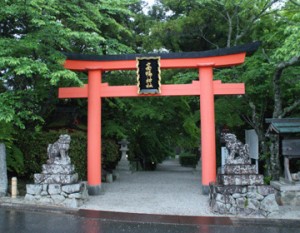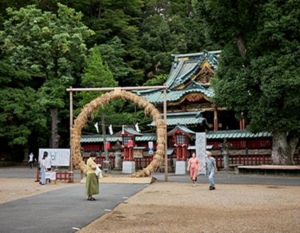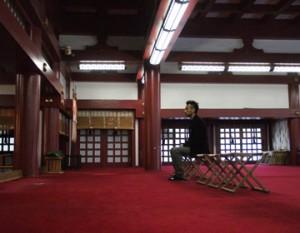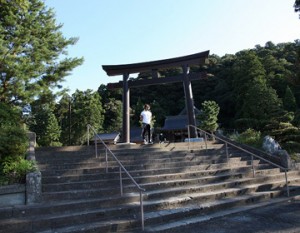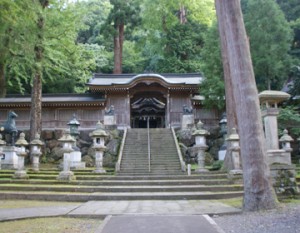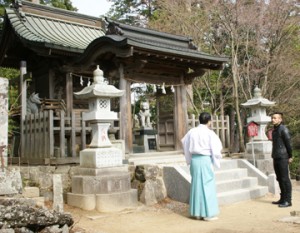Sumiyoshi Taisha Shrine, an architectural structure recognized as a national treasure
The architectural style seems different from other shrines I’ve seen.”
While viewing the main shrine pavilions of Sumiyoshi Taisha during a trip to Osaka, Nakata noticed something. The main shrines of Sumiyoshi-taisha are in a row from the first to the fourth main shrine, all of which are undoubtedly old shrine buildings. However, upon closer inspection, the atmosphere of the roofs and walls was different from that of other shrines.
When asked, the architectural style of Sumiyoshitaisha is called “Sumiyoshi-zukuri,” which is the oldest style of shrine architecture in history. It is characterized by its hiwadabuki (a technique of covering the roof with cypress bark), tsumairi-shiki kirizumatsukuri (two sloping sides of the roof are shaped like a mountain, with the entrance on the side that looks like a figure eight when viewed from the side [the gable end]), and tan-nuri (lacquered in vermilion using pigments such as vermilion and tan). The pillars are painted in vermilion (ni-nuri), and the walls are painted in gofun-nuri, which is a paste made from ground seashells. According to the priest who showed us around, “When the emperor is replaced, a court ritual called ‘Daijosai’ is held. The Sumiyoshi Zouzou has a structure similar to that of the Dajoubugu, which is built for this ceremony. The aforementioned main shrine is an ancient Japanese architectural style that has been designated a National Treasure, which is a testament to the prestigious nature of Sumiyoshi Taisha.

Power spot of “Sumiyoshi Shrine”, god of the sea
Sumiyoshi Taisha is a historic shrine built about 1,800 years ago. As the head shrine of more than 2,300 Sumiyoshi shrines throughout Japan, it has long been known as “Sumiyosan” in Osaka, and is the Ichinomiya of Settsu Province (the shrine with the highest number of shrines in the Settsu area). On New Year’s three days, more than 2 million people visit the shrine for the first time. In addition to the four main shrines, there are a total of 27 shrines in the vast precincts of the shrine, which are said to cover an area of about 30,000 tsubo. Sumiyoshi is often associated with the god of the sea, but in addition to being the god of safe navigation, Sumiyoshi is also the god of purification, agriculture, waka poetry, martial arts, sumo wrestling, and beckoning cats, making it one of the most famous power spots in Japan since ancient times.
There are also many other attractions such as the “Anti-Bashi Bridge,” which can purify you just by crossing it; the “Omokaruseki,” a sacred stone that can predict whether or not your wish will come true by the weight of your will when you lift it up; the “Goshogozen,” a stone with the words “Five,” “Great” and “Power” written on it that if picked up and used as a charm, your wish will come true. There are many places of interest in the area. I learned for the first time that “Issunboshi,” a famous tale told once upon a time, is said to have been a child of Sumiyoshi-Okami, and I found it humorous that there is a spot where you can take a picture of yourself in a bowl like Issunboshi. The shrine is located in a bustling area and is always crowded with worshippers, giving it a lively atmosphere that is typical of Osaka. In central Tokyo, one sometimes sees a high-rise building built on the site where a shrine or temple once stood, with a small concrete main shrine building in the corner of the site. However, Sumiyoshi Shrine will surely still be here 100 to 200 years from now, cheering up the people of Osaka. Walking through the spacious shrine grounds and bowing to the main shrine, I felt as if I had received a power boost.





